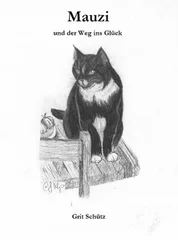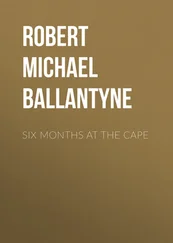Nellie Bly - Six Months in Mexico
Здесь есть возможность читать онлайн «Nellie Bly - Six Months in Mexico» — ознакомительный отрывок электронной книги совершенно бесплатно, а после прочтения отрывка купить полную версию. В некоторых случаях можно слушать аудио, скачать через торрент в формате fb2 и присутствует краткое содержание. Жанр: foreign_antique, foreign_prose, на английском языке. Описание произведения, (предисловие) а так же отзывы посетителей доступны на портале библиотеки ЛибКат.
- Название:Six Months in Mexico
- Автор:
- Жанр:
- Год:неизвестен
- ISBN:нет данных
- Рейтинг книги:5 / 5. Голосов: 1
-
Избранное:Добавить в избранное
- Отзывы:
-
Ваша оценка:
- 100
- 1
- 2
- 3
- 4
- 5
Six Months in Mexico: краткое содержание, описание и аннотация
Предлагаем к чтению аннотацию, описание, краткое содержание или предисловие (зависит от того, что написал сам автор книги «Six Months in Mexico»). Если вы не нашли необходимую информацию о книге — напишите в комментариях, мы постараемся отыскать её.
Six Months in Mexico — читать онлайн ознакомительный отрывок
Ниже представлен текст книги, разбитый по страницам. Система сохранения места последней прочитанной страницы, позволяет с удобством читать онлайн бесплатно книгу «Six Months in Mexico», без необходимости каждый раз заново искать на чём Вы остановились. Поставьте закладку, и сможете в любой момент перейти на страницу, на которой закончили чтение.
Интервал:
Закладка:
As a people they do not seem malicious, quarrelsome, unkind or evil-disposed. Drunkenness does not seem to be frequent, and the men, in their uncouth way, are more thoughtful of the women than many who belong to a higher class. The women, like other women, sometimes cry, doubtless for very good cause, and then the men stop to console them, patting them on the head, smoothing back their hair, gently wrapping them tighter in their rebozo . Late one night, when the weather was so cold, a young fellow sat on the curbstone and kept his arm around a pretty young girl. He had taken off his ragged serape and folded it around her shoulders, and as the tears ran down her face and she complained of the cold, he tried to comfort her, and that without a complaint of his own condition, being clad only in muslin trowsers and waist, which hung in shreds from his body.
Thus we leave the largest part of the population of Mexico. Their condition is most touching. Homeless, poor, uncared for, untaught, they live and they die. They are worse off by thousands of times than were the slaves of the United States. Their lives are hopeless, and they know it. That they are capable of learning is proven by their work, and by their intelligence in other matters. They have a desire to gain book knowledge, or at least so says a servant who was taken from the streets, who now spends every nickel and every leisure moment in trying to learn wisdom from books.
CHAPTER VI.
HOW SUNDAY IS CELEBRATED
"A right good land to live in And a pleasant land to see."
Every day is Sunday, yet no day is Sunday, and Sunday is less Sunday than any other day in the week. Still, the Mexican way of spending Sunday is of interest to people of other climes and habits.
With the dawn of day people are to be seen wending their willing footsteps toward their church. The bells chime with their musical clang historic to Mexico, and men and women cross the threshold of churches older than the United States. Pews are unknown, and on the bare floor the millionaire is seen beside the poverty-stricken Indian; the superbly clad lady side by side with an uncombed, half naked Mexican woman. No distinction, no difference. There they kneel and offer their prayers of penitence and thanks, unmindful of rank or condition. No turning of heads to look at strange or gaze on new garments; no dividing the poor from the rich, but all with uniform thought and purpose go down on their knees to their God.
How a missionary, after one sight like this, can wish to convert them into a faith where dress and money bring attention and front pews, and where the dirty beggar is ousted by the janitor and indignantly scorned down by those in affluence, is incomprehensible.
No Mexican lady thinks it proper to wear a hat into church. She thinks it shows disgust; hence the fashion of wearing lace mantillas. In this city of rights there is nothing handsomer than a lady neatly clad in black with a mantilla gracefully wrapped around her head, under which are visible coal-black hair, sparkling eyes, and beautiful teeth.
A ragged skirt, and rebozo encircling a babe with its head on its mother's shoulder, fast asleep; black, silky hair which trails on the floor as she kneels, her wan, brown, pathetic face raised suppliantly in devotion, is one of the prettiest, though most common, sights in Mexico on Sunday morning.
This is the busiest day in the markets. Everything is booming, and the people, even on their way to and from church, walk in and out around the thousands of stalls, buying their marketing for dinner. Hucksters cry out their wares, and all goes as merry as a birthday party. Indians, from the mountains, are there in swarms with their marketing. The majority of stores are open, and the "second-hand" stalls on the cheap corner do the biggest business of the week.
Those who do not attend church find Mexico delightful on Sunday. In the alameda (park) three military bands, stationed in different quarters, play alternately all forenoon. The poor have a passion for music, and they crowd the park. After one band has finished, they rush to the stand of the next, where they stay until it has finished, and then move to the next. Thus all morning they go around in a circle. The music, of which the Mexican band was a sample, is superb; even the birds are charmed. Sitting on the mammoth trees, which grace the alameda, they add their little songs. All this, mingled with the many chimes which ring every fifteen minutes, make the scene one that is never forgotten. The rich people promenade around and enjoy themselves similar to the poor.
In the Zocalo, a plazo at the head of the main street and facing the palace and cathedral, the band plays in the evening; also on Tuesdays and Thursdays.
Maximilian planned and had made a drive which led to his castle at Chapultepec. It is 3750 feet long, wide enough to drive four, or even six teams abreast. It is planted on the east side with two rows of trees; one edging the drive, the other the walk, which is as wide as many streets. The trees are now of immense size, rendering this drive one of the handsomest, as well as most pleasant, in Mexico. Maximilian called it the Boulevarde Emperiale; but when liberty was proclaimed the name was changed to the Boulevarde of the Reform. On the same drive are handsome; nay more, magnificent statues of Columbus, Quatemoc, and an equestrian statue of Charles IV. of wonderful size, which has also been pronounced perfect by good judges. A statue of Cortez is being erected. This paseo is the fashionable promenade and drive from five to seven P.M. every day, and specially on Sunday afternoon. The music stands are occupied, and no vacant benches are to be found.
Those who call the Mexicans "greasers," and think them a dumb, ignorant class, should see the paseo on Sunday: tally-ho coaches, elegant dog-carts, English gigs, handsome coupes and carriages, drawn by the finest studs, are a common sight. Pittsburg, on this line, is nowhere in comparison. Cream horses, with silver manes and tails, like those so valued in other cities, are a common kind here. The most fashionable horse has mane and tail "bobbed." It might be added this style prevails to a great, very great extent among all animals. Cats and dogs appear minus ears and tails. Pets of every kind are much in demand. Ladies carry lap dogs, and gentlemen have chained to them blooded, dogs of mammoth size. The poor Mexican will have his tame birds; even roosters are stylish pets. "Mary had a little lamb" is respected too much here to be called "chestnut." The favorite pets of children are fleecy lambs, which, with bells and ribbons about their necks, accompany the children on their daily airing.
Mexico, while in the land of churches, would be rightly called the city of high heels, hats, powder and canes. Every gentleman wears a silk hat and swings a "nobby" cane. There are but two styles of hats – the tile hat and the sombrero. Every woman powders – lays it on in chunks – and wears the high heels known as the French opera heel. The style extends even to the men. One of the easiest ways to distinguish foreigners from natives is to look at their feet. The native has a neat shoe, with heels from two inches up, while the foreigner has a broad shoe and low heel. These people certainly possess the smallest hands and feet of any nation in the world. Ladies wear fancy shoes entirely – beaded, bronzed, colored leather, etc. A common, black leather shoe, such as worn by women in the States, is an unsalable article. Yet it is nothing strange to see a lady clad in silk or velvet, lift her dress to cross a street or enter a carriage, and display a satin shoe of exquisite make and above it the hosiery of Eve. In fact, very few women ever wear stockings at all.
This city is a second Paris in the matter of dress among the elite. The styles and materials are badly Parisian, and Americans who come here expecting to see poorly-dressed people are disappointed. Like people in the sister Republic, the Mexicans judge persons by their dress. It is the dress first and the man after.
Читать дальшеИнтервал:
Закладка:
Похожие книги на «Six Months in Mexico»
Представляем Вашему вниманию похожие книги на «Six Months in Mexico» списком для выбора. Мы отобрали схожую по названию и смыслу литературу в надежде предоставить читателям больше вариантов отыскать новые, интересные, ещё непрочитанные произведения.
Обсуждение, отзывы о книге «Six Months in Mexico» и просто собственные мнения читателей. Оставьте ваши комментарии, напишите, что Вы думаете о произведении, его смысле или главных героях. Укажите что конкретно понравилось, а что нет, и почему Вы так считаете.











